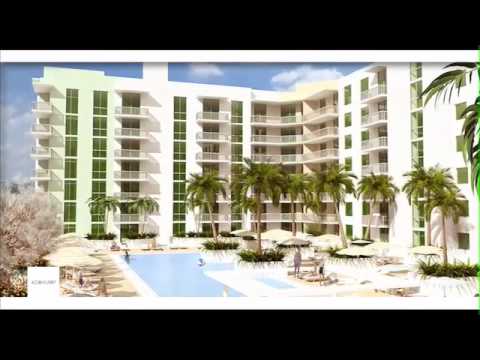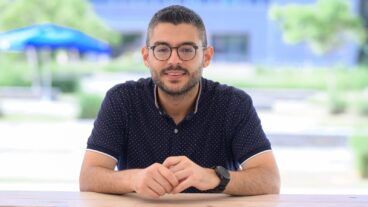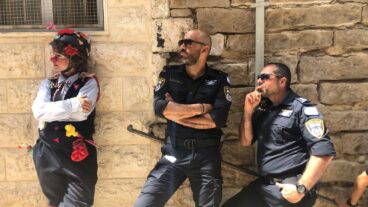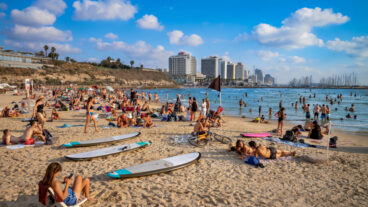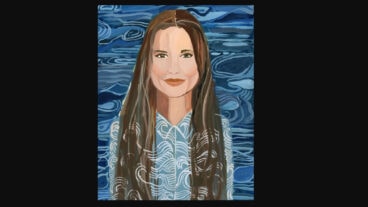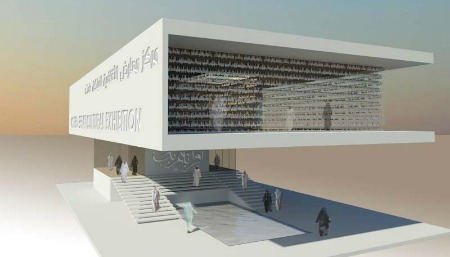
Miami wouldn’t look the same if it weren’t for Israel-born architect Kobi Karp, whose hotel, resort, residential and commercial buildings dot the sunny Florida city’s skyline.
Licensed throughout the United States and in countries such as Qatar and the United Arab Emirates, Karp has been based in Miami since 1988 and recently won awards for his Hilton Q-Club and Miami Airport Marriott-Residence Inn designs.
But his projects, marked by “green” design practices, are found across the globe.
Kobi Karp Architecture and Interior Design (KKAID) of Miami is behind such edifices as the Etihad Towers in Abu Dhabi; Amalfi in Capetown, South Africa; Carriacou in Grenada; Dubai Promenade; Panama Financial Tower; Baku Icon Tower in Azerbaijan; Queen Effat Cultural Exhibition Center in Jeddah, Saudi Arabia; and Dongshan Tourist Service Center in China.
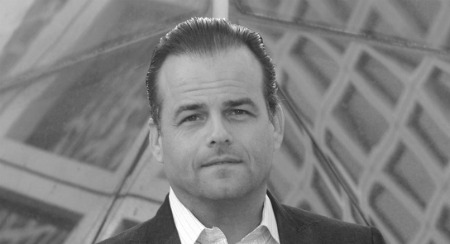
KKAID recently won a design competition for its master plan for Bar-Ilan University’s new medical school campus on the outskirts of Safed (Tzfat) in northern Israel. The site seemed to present a challenge, sitting on a hill across a gorge from Safed and its hospital.
“The thought originally was how high and how big they could build it,” Karp tells ISRAEL21c. “When we walked the site, it became abundantly clear that the project’s greatest asset is the site itself, located on a sloping shoulder of a hill that tilts toward the northern part of the Kinneret – the Sea of Galilee – making for a unique vista that’s very dramatic.”
He and two local partner architects “started to think organically about low-rise structures built into the shoulder of the hill, creating opportunities for outdoor and indoor spaces with orientation and views of the Kinneret to side and the Galilee valleys and the city of Tzfat toward the other direction.”
Construction will begin as soon as funding is in place.
‘Architecture is like people’
Though he’s involved in several Israeli housing projects and he visits his 30th-floor Ramat Gan offices at least every three months, Karp’s business connection with his homeland is primarily behind the scenes.
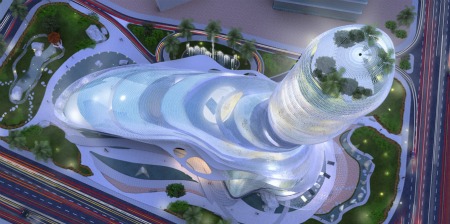
“I have partnered on projects with Israeli development companies for the past 10 years, in the US and in places like Cambodia, Angola, South Africa and Romania,” he says.
Over the last quarter century, KKAID has garnered international acclaim for numerous resort projects in the Caribbean, Black Sea region and Middle East.
“Every project is unique and challenging in its own way and on its own merit,” says Karp. “Architecture is like people; as much as you try to broad-brush it, at the end of the day you really have to look at the minutiae and appreciate each [building site] individually, capitalizing on its strengths and strengthening its weaknesses.”
Every design is inspired by the site’s history and context, and by the “urban fabric” that surrounds it in the form of the built and the natural environment.
Karp’s conceived his vision for the Dongshan Tourist Service Center from observing the local flora and fauna and studying the natural and physical history of the Dongshan region of China, which is comprised of 44 islands. His design is inspired by the curves of wind and sea-shaped boulders.
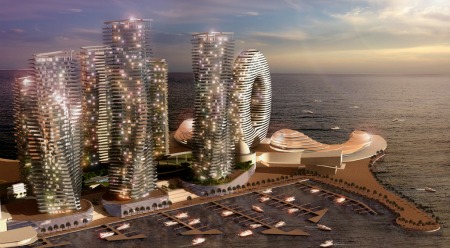
“On the China Sea, the boulders sit one on top of another like an ‘8,’ which has significance in Chinese numerology,” says Karp. “The history of the rock formations, the battles fought between the Japanese and Chinese on those rocks, and the pagodas built more than 1,000 years ago were all used as inspiration in a modern abstract way, and it worked quite well. The building relates to the environment, but most importantly it is modern and environmentally correct.”
The Queen Effat Cultural Exhibition Center was designed as a modular, minimalist “book” elevated as a symbol of wisdom. The inscription “Knowledge is Light, Ignorance is Darkness” is etched on all three sides in glass to create the look of lines on individual pages.
Winning acclaim for environmentalism
Like other notable native Israeli architects such as Moshe Safdie, who also moved to the US at a young age, Karp says he enjoys a warm and welcoming relationship with clients everywhere.
“People are just looking for architects they like and respect,” he explains. “Where I was born is interesting but it makes no difference to them.”
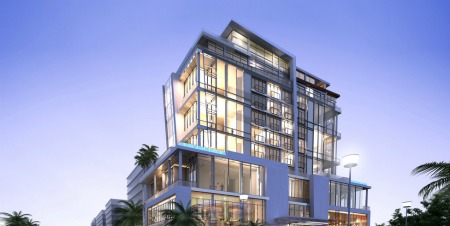
Karp was born in Hadera in 1962 and lived in Netanya until he was 12. In 1974, his family relocated to Minneapolis. He studied environmental design at the Institute of Technology at the University of Minnesota and got his bachelor’s degree at its school of architecture.
Named Miami’s Outstanding Young Architect of the Year in 1999, Karp has received many awards for his historic restoration and environmental design techniques — most recently, the Design Center of the Americas “Stars of Design – Architecture” award for 2011.
KKAID employs more than 50 people in Miami. “As an architect, what I enjoy is thinking about building and designing,” he says. “I’m lucky I get paid for doing that.”
Karp and his wife, Nancy, have two sons ages 15 and 9.




